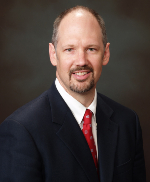Every college president faces the same challenge of figuring out what to do with the limited resources they have available. Scarce resources are usually defined in terms of money. In 1974, James G. March and Michael Cohen proposed that in higher education, scarce resources should also include the time and energy available to the president and chief administrators. Assuming they have limited amounts of time and energy, then it necessarily follows that focusing on the wrong or too many priorities will necessarily reduce their ability to focus on priorities needed to successfully drive the institution forward.
This blog is primarily concerned with the effect of scarce non-financial (time and energy) resources on presidents of small, non-research institutions, especially those colleges that are financially unstable, and their ability to manage strategic initiatives. In most cases, these presidents do not have a deep administrative team because their senior administrative officers do not have a deep bench supporting staff to help with their work. In some cases, one or more of the senior administrative officers may not have the experience to understand the details of the work of their office or the requirements to effectively manage a strategic initiative. As a result, the presidents of these colleges must work with each senior administrator to help them develop and even manage their strategic initiative.
One example of the demand on scarce time and energy imposed on presidents would be the adoption of a new academic program as a major strategic initiative. The president and the Chief Academic Officer will more than likely have to work together to design the curriculum, prepare the budget, consult with the faculty, design a marketing plan, select and improve or add instructional space, and oversee implementation of the program. The expenditure of the president’s time and energy on such a project is not trivial and can be overwhelming if there is an obdurate faculty or other obstacles to planning and implementation. The time spent on getting this academic initiative moving will probably absorb excess time and energy needed for other critical initiatives.
Financially weak colleges are most vulnerable to the limits of scarce time and energy resources of their presidents because the college requires constant work to keep it afloat. The presidents at these colleges often face a Sisyphean dilemma. Do they work solely on keeping existing instructional services, marketing programs, capital projects, and operational costs on track which keeps the college porpoising into and out of deficits? Or, do the presidents turn their attention to new strategies, which diminishes the time spent on monitoring existing operations and therefore find that the college is sliding backward as the quality of operations and financial viability diminishes?
So, how can presidents, in collaration with the board of trustees, select strategic initiatives that can advance the instructional, operational and financial integrity of a small, financially vulnerable college? Here are several suggestions:
- Before a president adds a new strategic initiative to a “to do” list, set realistic expectation regarding how much time will be required to implement it and how existing projects would take away the time from the management of the new initiative.
- Presidents should concentrate on strategic initiatives to develop new academic programs and/or concentrate on new market segments (geographic segments, demographic segments, or other types of markets) to expand enrollment and/or new revenue sources.
- Presidents should limit their involvement in trivial initiatives that absorb a considerable amount of time and only produce a marginal impact on the financial condition of the institution.
- Presidents of small, financially unstable colleges need to surround themselves with skilled senior administrative officers. The cost may be large but the benefits could be larger.
- Presidents should seek senior administrative officers with these characteristics for three key positions. Chief academic officers should understand the implications of new academic programs and be able to produce management reports that track critical performance measures. Chief financial officers should be skilled accountants and should be able to produce financial plans that predict the effect of strategic initiatives. Chief marketing officers should know whether new students would be attracted to new academic programs, how to increase enrollment in existing programs, and how to develop effective advertising plans.
- If the president must make dramatic cuts in personnel, a good higher education attorney should review the plans and any contracts. Otherwise, the president may find that their life is absorbed by court appearances and labor negotiations.
- Presidents of these colleges must recognize that speed in implementation of a strategic initiative, in particular initiatives intended to generate enrollment, is everything. Taking more than one year to move from plan to action can raise the risk that a college’s financial condition will continue to deteriorate as enrollments decline further. As a college slides further down the enrollment scale, pressure on new programs to generate larger enrollments become greater and may fall beyond the capacity of the plan or the resources of the college to be successful. These risks are exacerbated as a president’s scarce time and energy resources are swamped by unexpected crises owing to the deteriorating condition of the institution. Tempo is key in improving the financial condition of a small college. A president must get the right resources at the right place at the right time; delay is waste.
Effective use of scarce resources requires a comprehensive strategic plan that lays out strategic initiatives, tests those initiatives, and set priorities that account for the cost, time, and energy of the president and senior administrators. With a thoughtfully designed strategic plan, the president can focus on the most important initiatives and increase the probability that the college can strengthen its financial position and its academic programs.


 John Stevens, Ed.D.
John Stevens, Ed.D. Brendan Leonard, M.B.A.
Brendan Leonard, M.B.A.